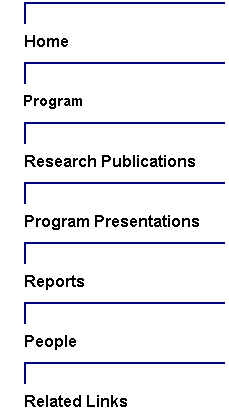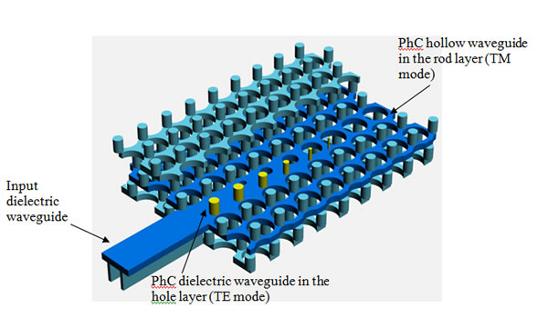
|
Design of an Integrated Polarization Rotator |
|
The third thrust at Purdue is the design of an integrated polarization rotator for the coupling of light into hollow waveguides. Our proposed devices rely on hollow waveguides or cavities to achieve light amplification. However, the hollow waveguides, where light is confined in low-index materials, have completely different mode profiles than standard waveguides, where light is confined in high-index materials. Therefore, direct coupling between a rectangular Si waveguide and a hollow 3D photonic-crystal waveguide will create strong reflection and scattering.
Itís possible to achieve high coupling efficiency from rectangular silicon waveguide to dielectric photonic crystal waveguides (i.e. waveguides formed by filling holes with silicon). However, dielectric photonic crystal waveguides supports only the TE modes, while the hollow (or air) waveguides in 3D photonic crystals supports only TM modes. Therefore, an integrated polarization rotator (Fig. 5) is required to interface the dielectric waveguide with the hollow waveguide in a 3D photonic crystal.
Figure 8 illustrates the polarization rotator inside a 3D photonic crystal. The dielectric waveguide is formed by filling a row of holes in the hole layer. Then the holes slowly re-appear in the waveguide, while the rods above the waveguide slowly reduce their diameter. Therefore, the dielectric waveguide will terminate and a new waveguide in the above rod layer will form. Our initial simulation indicates that 60% of the incoming TE power in the dielectric waveguide can be converted into TM mode power in the hollow waveguide. We can have a bandwidth of 10nm for almost flat conversion (< 1dB variation). We believe that both the conversion efficiency and the bandwidth can be significantly improved by optimizing the transition region |
|
Figure 5: Illustration of an integrated polarization rotator in a 3D photonic crystal. |




